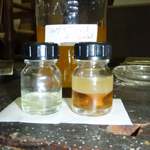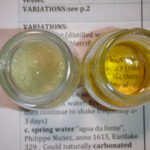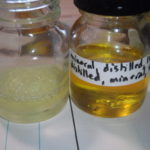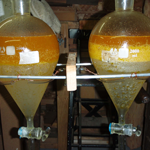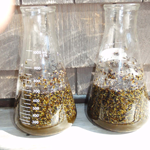Sometimes earth and mineral pigments and plant oils go into making a painting:

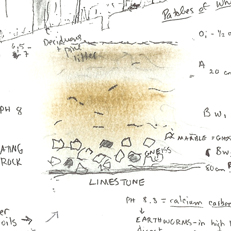
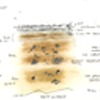
Some pigments might come somewhat directly from the soils and bedrock, as above, and below.
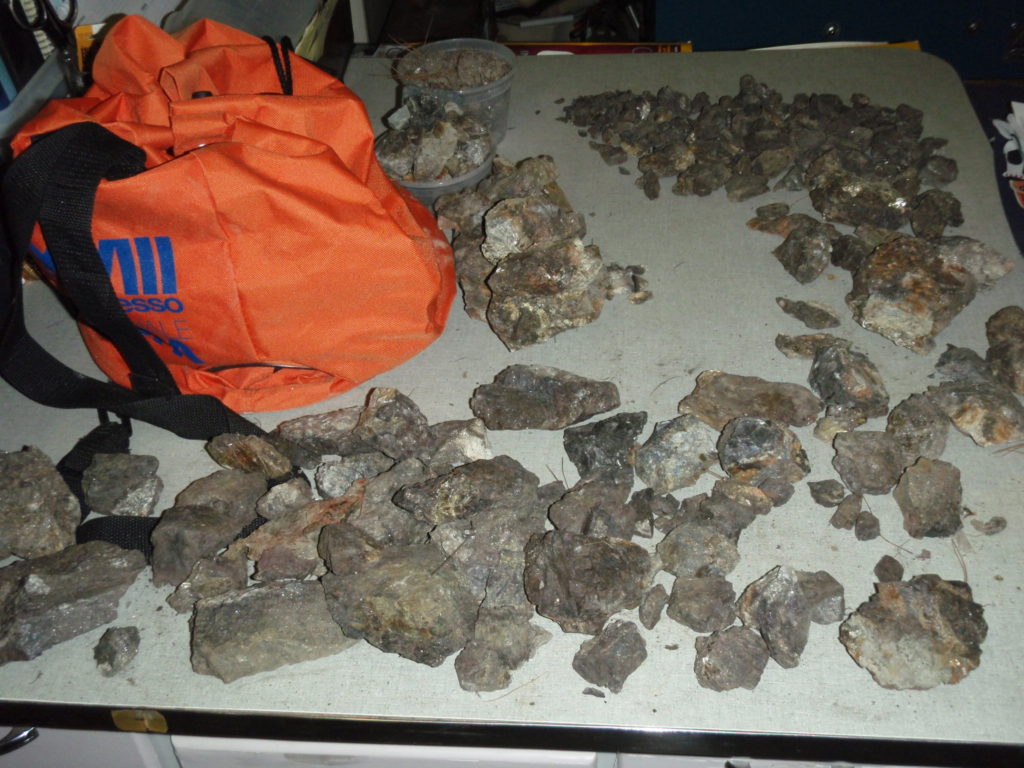


There are some plentiful pigments, and also scraps of pigments derived from other rock processes that wonderful pigments can be made from. Great rare rock and mineral specimens shouldn’t be ground up into pigments, however, except perhaps in rare circumstances. The problem though is that some of the most pure crystals that require little processing for pigment might also be the more valuable and beautiful mineral specimens. That said, minerals of lesser quality can be purified into pigments, and there is information about how to do this written in texts, given in workshops, distributed by pigment color manufacturers such as Kremer Pigments in NYC. An excellent text to reference is by Michael Price and is titled Renaissance Mysteries Volume I: Natural Colour. This explains how to paint with mineral pigments; minerals, and binders for the minerals.
Another way to paint is with ready-made oils. There are some drawbacks to ready-made oils, but there are also some positives. Twenty years is a short period of time in the life of a painting, if a painting is made to last more than one generation, however, paintings that I have made twenty years ago and 30 years ago also still look fine and are flexible yet. Below a painting I painted in 2007 during a workshop in Tamworth, NH with M. Doyle.
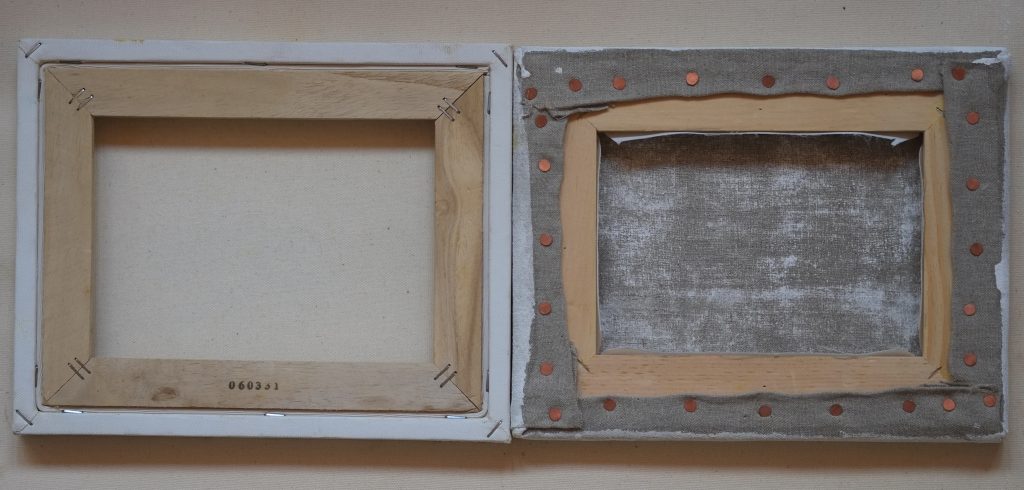
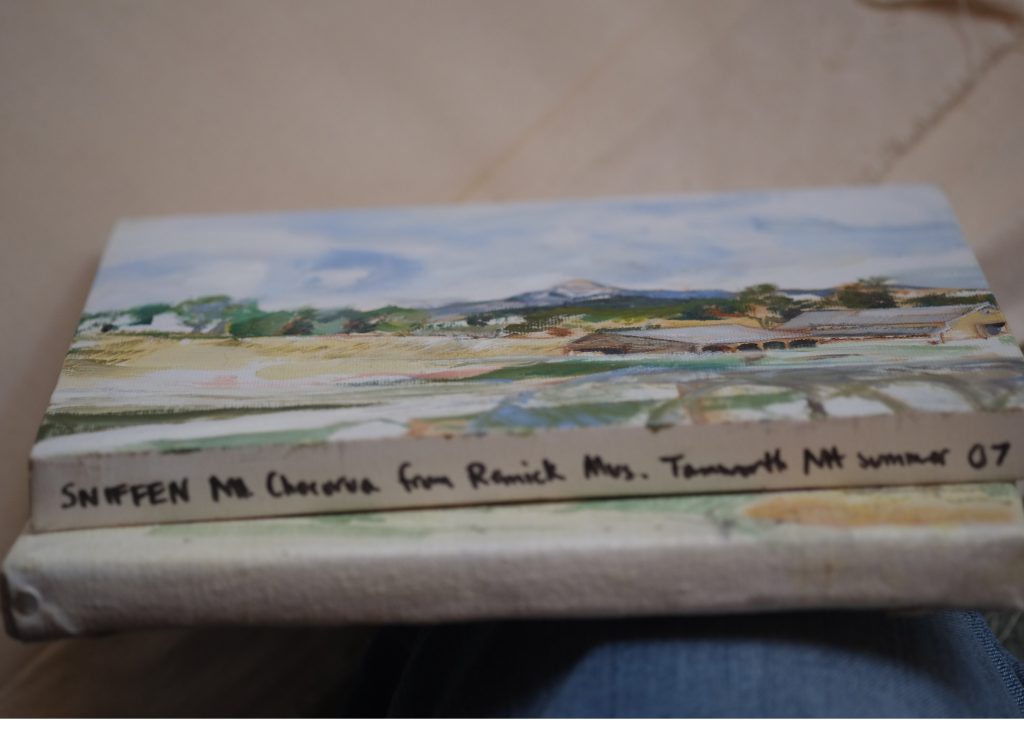
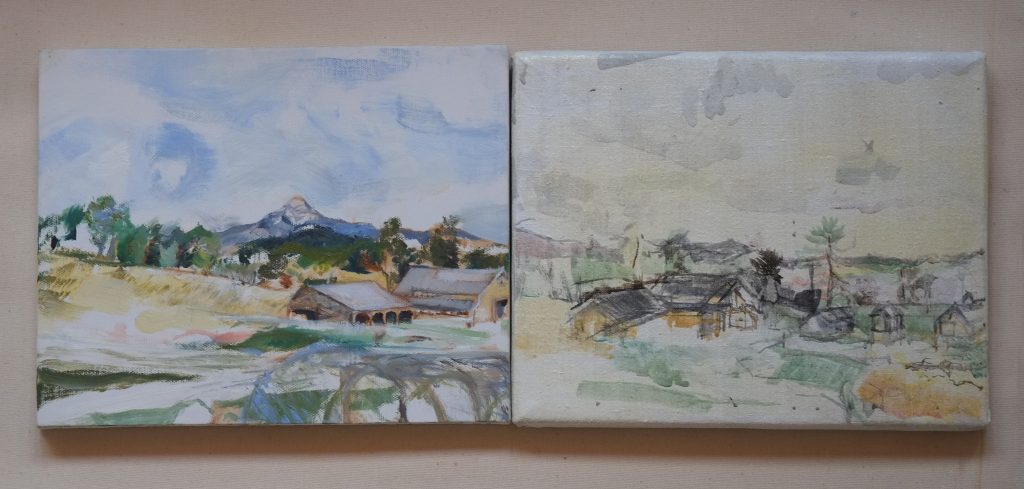
Above, two paintings, the tube oil painting on ready-made canvas pre-primed (I assume with acrylic gesso) on the left. On the right, a painting made with only one binder – that is fine for paintings using ready-made tube paints generally (though probably not always), but not for mineral pigments, and it is made with mineral pigments brought out into the field for alla prima mineral pigment painting. It has a beautiful way of catching light though not as white with clear blues as the oil paint on acrylic on the left – but again, for the mineral pigment painting to both catch the light on the various planes of the pigment and also to be as non-yellow as possible, one must know how to go about it. Again, I suggest Michael Prices books (Volume I especially for how to choose binders, but also Volume II for much more information about painting with mineral pigments).
Some of the plant oils which go into making a painting and linseed oil from flax (the fiber linen is made from), and certain evergreen resins, for example.
That’s about all I have to say today, 5/9/2023, as texts and references available are very good.
Below I wrote more a few years ago. I am not re-checking it today to see if I still am in agreement. It has also been a while since I’ve painted, and so I might not know if I do for every point.
On flax oil in pigment layers, and oil and oil mediums;
On pigment preparation with protein sources – pigment levigation:
For advice on oils, and advice on pigment preparation and levigation, Renaissance Mysteries by Michael Price is my primary reference, as well as reading period texts, art conservation texts, and readings from art companies such as Kremer Pigments, Golden, and Sinopia, for example. Indeed, today as I update this (August 5, 2019), I have just referred to an article on oil at Golden – great – with a flow chart on oil refining.
Oil trials to purify oil:
One summer I ran some oil purification trials, hoping to purify linseed oil to make oil clear and clean and light enough for a variety of colors, including for blues, based on Pacheco’s recipe (inspired by L. Velasquez, and work done by M. Price – especially his extensive work with many other materials). The project also was a good way to gain greater insight into one material which is a key to oil painting, regardless of results, as I refined much oil, whether or not successfully.
Results:
Some of the final samples were tested by Michael Price with mineral pigments, and the oil yellowed – as did other oils which he tested – he did not rely on just this oil for his tests. Oil is perhaps not best for cool blues and colors with which yellow binder will discolor the pigment it is bound in – for advice on quantity, see his books.
A very little bit of clear oil, however, was made, but was untested.
The little bit of clear oil below, and the same, later, no longer clear, slightly yellowed, but still light:
The notes on the pre-trial, re-written from quick hand-written notes, about a year after:
In a pre-trial, [which I did quickly end of April/beginning of May before my more planned out oil trials, following Pacheco’s instructions, and using a small quantity of flax oil, without washing the oil first in a separatory funnel], I had also found the oil to be a little dark at the end of the experiment, after straining. The only answer that I had for this, at the time, as I needed a quick answer which would not be contrary to Pacheco’s directions, was to repeat his directions, like a refrain in a piece of music is repeated.
Repeating the experiment resulted in a lemon yellow oil, much to my relief, although, I was now concerned that the oil had residual alcohol in it, and did not know how this would affect the oil. When the oil was abandoned and left in a cool location with dim light,and with some calcium carbonate left in it, this lemon yellow oil lightened to an almost colorless oil. Most all of this almost colorless oil was lost … although what was made is pictured below. The little that was not lost dried into a film.SKS – April 23, 2011, one year after the pre-trial was finished in April of 2010.
Pretrial Tools and Materials:
It is not certain in the pre-trial that I had the correct materials – not even indeed the correct linseed oil.
Sun-rays: The sun enables the process.
Glassware: The little bit left in the glass did seem to yellow slightly as it dried up- (and I wonder if the chemistry of the glass, or jar, it is stored in also makes a difference – also, if the jar is clean, run through a dishwasher, and rinsed with distilled water and dried, and yet, perhaps not yet entirely sanitary?).
Alcohol: An email communication confirms that in the first pre-trial I used a little borrowed grappa for the small amount needed, but did not use grappa for further trials – however, maybe should have. (Perhaps I also did not use grappa for the re-run of the pre-trial, completed in September, although I have not checked these notes yet). The grappa I do not believe was used at the original strength, as Pacheco’s “aguardiente fina, que llaman de cabeza”, possibly had a stronger proof – in my hand-written notes, but without a reference – is written that the head is 83% alcohol, or 167 proof – about the first 1% of distillate produced, and of “the type normally thrown out” (alcohol information from http://en.wikipedia.org/wiki/Brandy 4/24/2010) – so, non-potable.
Oil: The oil Pacheco used may have varied in its pH (I used Barleans), – it would have been unique to whatever region of origin he got it from. I have not inquired where the seeds for Barlean’s oil came from in 2011.
Lavender: As to lavender, it was purchased, and very fragrant, possibly US in origin – perhaps the trials should have been run with a regional Spanish lavender.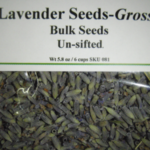
Measures: I have not yet found my notes on the pre-trial measures used, but it would have been similar to the trial made at the end of summer – using about 53 1/2g of oil, 10g of alcohol, 6 2/3 grams of lavender.
On methods, and oil chemistry:
Having made the light oil, logically the rest of the trials might have been done by putting the oil through Pacheco’s method twice. However, Pacheco did not specifically say to repeat his process, and it yielded very little oil. Also, the lightening of the oil had happened unobserved as it was set said. For the rest of the trials, oil was run through just once, using a preliminary clean.
So, the trials were continued by following several other recipes for cleaning an oil. By following recipes, no consideration to known chemical reactions between materials was necessary right then (though it would have helped in choosing the recipes – but I just followed the recipes. It would be now interesting to compare contemporary methods of oil refining, such as alkali refining to Pacheco’s methods, and to the pre-trial.
The decision was to clean the rest of the oil for the trials following different texts, using quite clean and clear pressed oil from linseeds (in this case, oil in a plastic Barlean’s bottle of oil).
The pH of the oil I did not check when refining it. Given Kremer Pigment’s mention that northern linseed oil tends to have a lower acidity than southern oil (page 59 of their catalog kremer-pigmente.com/…/Katalog-Englisch.pdf ), and also given how important pH is for reactions, for any further oil refining, I would take pH measurements.
Pacheco’s advice on refining linseed oil:
Pacheco wrote about a flax oil that could be used with blue, white, and red pigments – (… y aqui anadiremos como se purificara el aceite de linaza PARA QUITARLE LA AMARILLEZ Y QUE SIRVA AL BLANCO AZUL” (Francisco Pacheco wrote this in Arte de la Pintura , Libro Tercero, Cap. V,and please excuse a while, not adding proper accents to the letters). Flax oil being refined following Pacheco’s instructions is seen in the photo below (middle photo).
Francisco Pacheco’s text:
Here is an excerpt from Francisco Pacheco – Arte de la Pintura – without proper accents – and a very rough translation below as I understood it. In the “Reprints from the collection of the University of Michigan Library”, it is on page 83 of volume 2.
Tomese una redoma de vidrio y a una libra de aceite de linaza limpio y claro se le echen tres onzas de aguardiente fina, que llaman de cabeza, y dos onzas de alhucema, o espliego en grano, y pongase al sol fuerte quince días, meneandolo dos veces cada dia, y de esta manera queda claro y purificado, y colandolo en otro vidrio se pueden aprovechar de el en los blancos, azules, y carnes. Puedese hacer mas o menos cantidad de una libra, echándole las demás cosas al respecto de como se ha dicho.
Rough translation:
Take a glass flask and to it pour some clean and clear linseed oil and add three ounces of fine (brandy? grappa? aguardiente – spirit, liquor) that is called “of the head?
( headfirst? upside-down?- does “fina” in “”aguardiente fina”, indicate this was also a fine potable spirit, or does it indicate the verb “to refine”, “refinare”, given that one of the products of rectification is called “the head” (and another “the tail”), removed, as it includes substances other than pure ethyl alcohol, such as methyl alcohol. For information on grappa rectification, see grappa.com and the Poli Museo della Grappa),
and two ounces of lavender or grains of lavender, and put it to (under) a strong sun for fifteen days, stirring twice a day, and in this way it will be cleaned and purified, and can be strained into another flask to be put to good use for whites, azure blues, and reds. You can have a lesser or greater measure of oil (more than a pound, or less), throwing in all else, with respect to how it has been said already (keeping the measurements in the same proportions?).
Note on the oil trials:
The painters who inspired me to try cleansing and clearing flax oil, were Michael Price, and also through his writings, the contemporary painter Luis Velasquez (who has done much work based on Pacheco’s advice – I purchased his text through Kremer Pigments), and then, as my notes reminded me, Francisco Pacheco’s writings as well (thanks to online resources – for the Pacheco text, thanks to U. Michigan, as noted above, p. 83, volume 2), some roughly translated, and also, some passages of his work I was able to read thanks to Zahira Veliz (Studiesin Conservation27 (1982) 49-57 “Francisco Pacheco’s Comments on Painting in Oil”-Volume II, Book III, Chapter V . In these passages, there is also some information about oil, and blues, and materials and methods.
.Here are the summaries of trials after the pre-trial: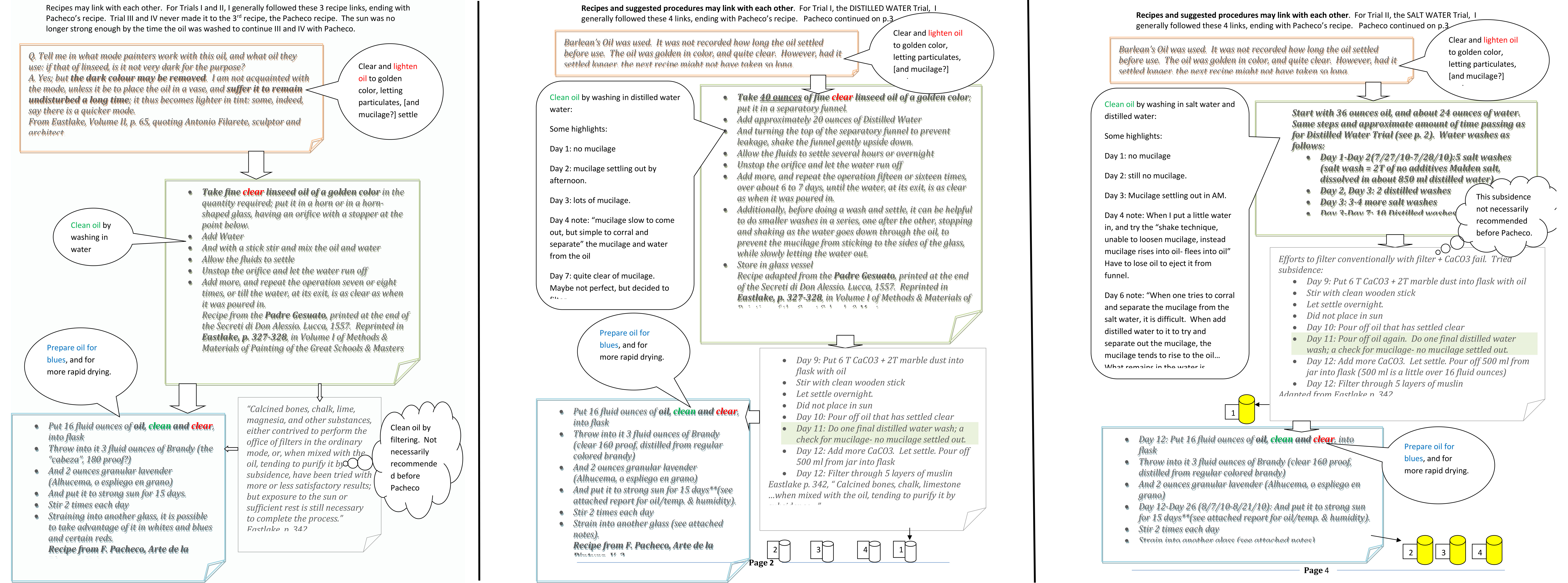
Some Notes:
More Notes:
A thought on oil-protein emulsions :
An oil-protein emulsion was used following a recipe by Mayer for the painting, which can be seen on the “water” page of this site, with the pink rock. It has a light yellow-blue sky – although, I no longer recall which pigment I painted the sky with – probably a cobalt blue. In this painting, a slightly yellowed sky is fine – as long as the blue does not become green. In part, because yellow is sunny. Nonetheless, in some painted areas, and with an expensive blue pigment, I would not be ambivalent, and artists in the Renaissance likely were not either- they would often have sought to keep the blue, blue.

